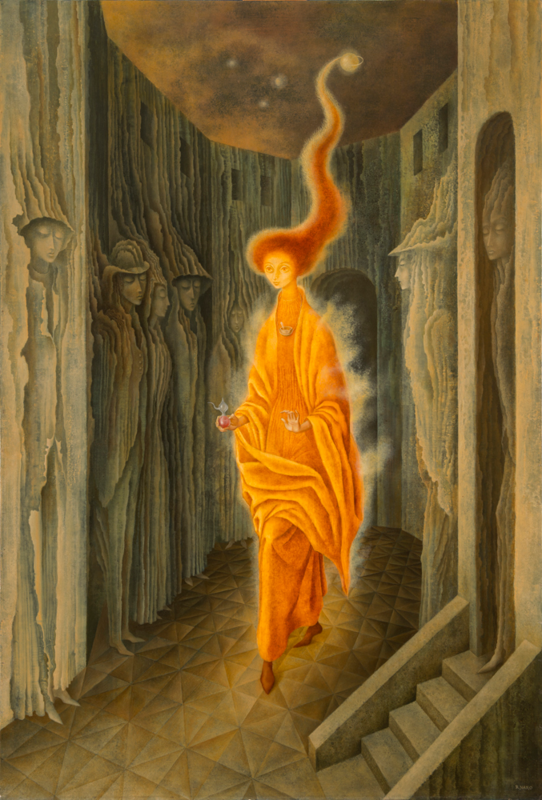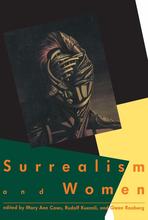More about The Call
- All
- Info
- Shop

Contributor
The young alchemist of The Call looks ethereal enough to walk through walls.
She glides, hair pointed skyward like the ends of Dalí’s moustache, with the tools of her trade: a beaker in the hand and a mortar and pestle around her neck. Unlike all those unfortunate master alchemists who never quite discovered how to make gold from lead (spoiler alert: they were attempting the impossible) her otherworldly glow seems to suggest success.
In reality, alchemists weren’t quite so majestic. Paracelsus, alchemist and scientific pioneer of the 1500s, believed in invisible gnomes and nymphs and tried to treat patients with poisons like arsenic and lead. Even Sir Isaac Newton himself, who moonlighted as an alchemist, called antimony the “menstrual blood of the sordid whore.” If Newton’s descriptive prose unsettles you, you definitely won’t like Hennig Brand. This kooky alchemist discovered phosphorus accidentally-- but he experimented on 1,500 gallons of human pee to get there. Even the alchemist of the hour in 1589, Edward Kelley, failed to produce the gold he promised the emperor. Without a Rumpelstiltskin to help him, Kelley lost his celebrity status and met a gruesome end that involved prison, poison, and an amputated leg.
Remedios Varo herself was apparently unperturbed by alchemy’s sketchy track record. A big fan of The Garden of Earthly Delights, she predictably had a few eccentric interests. Varo dabbled endlessly in different philosophies and religions, taking a special interest in platonism, numerology, and Christian mysticism. Although it’s doubtful Varo ever concocted a philosopher’s stone in her Mexico City home, Varo was especially intrigued by alchemy. Many think that the figure pictured in The Call is meant to mirror the artist’s own features. Remedios Varo saw herself in this young woman, and it’s unsurprising she didn’t depict the more discomfiting side of alchemical history. A successful, glowing miracle worker is far more awe inspiring than invisible gnomes and gallons of human pee. Historically accurate or not, let’s keep The Call the way it is.
Sources
- Berland, Rosa. "Remedios Varo's Mexican Drawings." Journal of Surrealism and the Americas 4, no. 1 (2010): 31-42. Accessed June 3, 2017. https://jsa.hida.asu.edu/index.php/jsa.
- Kelly, Debra. "10 Alchemists Who Created Strange Modern Legacies." Listverse. June 7, 2015. Accessed June 3, 2017. http://listverse.com/2015/06/07/10-alchemists-who-created-strange-moder….
- "La llamada (The Call)." National Museum of Women in the Arts. Accessed June 3, 2017. https://nmwa.org/works/la-llamada-call.
- "Newton the Alchemist." PBS. November 15, 2005. Accessed June 3, 2017. http://www.pbs.org/wgbh/nova/physics/newton-alchemist-newman.html.
- “Remedios Varo.” Wikipedia. May 18, 2017. Accessed June 3, 2017. https://en.wikipedia.org/wiki/Remedios_Varo.












